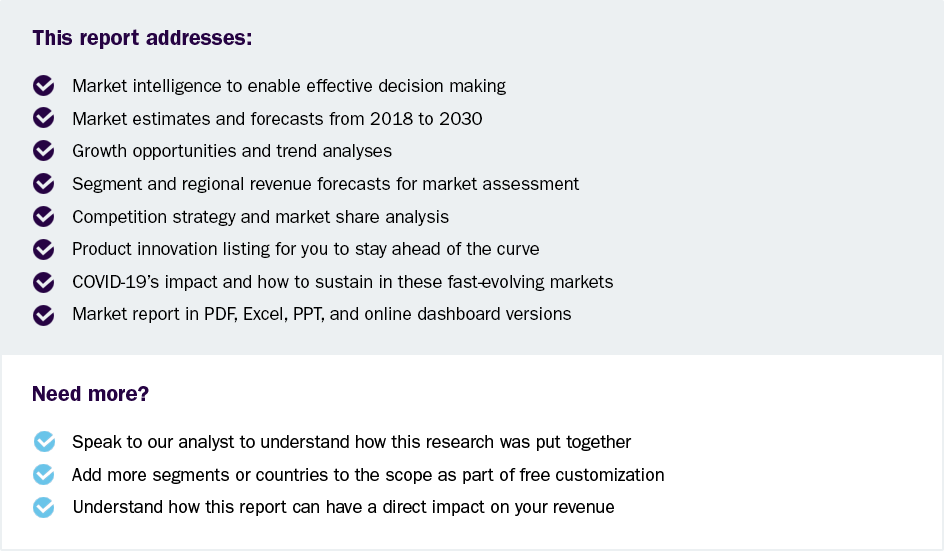Wireless Brain Sensors Market To Reach $979.6 Million By 2030
Wireless Brain Sensors Market Growth & Trends
The global wireless brain sensors market size is expected to reach USD 979.6 million by 2030, expanding at a CAGR of 10.0% from 2025 to 2030, according to a new report by Grand View Research, Inc. The increasing geriatric population, technological advancements, and rising prevalence of Traumatic Brain Injuries are the key factors driving the market.
Various initiatives undertaken by public and private organizations to raise awareness regarding TBIs are anticipated to boost the market growth. For instance, Brain Injury Awareness Month organized in the month of March, led by the Brain Injury Association of America, provides an opportunity to raise awareness regarding the lifetime effects of TBI. It is a national public awareness campaign that emphasizes the importance of acknowledging the impact of TBIs. The theme for the 2018 to 2020 campaign was “Change Your Mind.” This campaign educates the public about the prevalence of the injury and the needs of people with TBIs and their families. The goals of this campaign are primarily focused on:
-
Promoting the available support systems to people suffering from TBIs
-
Empowering brain injury victims and their caregivers
According to the CDC, prominent causes of TBIs include assault, sports injuries, falls among older adults, and road accidents. The CDC is continuously taking efforts to minimize accidental injuries by improving sports concussion culture, preventing falls in older adults, and increasing vehicle safety. For instance, the CDC has introduced a new educational gaming app that educates children aged 6 to 8 years about basic concussion safety. This app shows kids how the brain can get injured in different ways during sports activities, and how important it is to tell a parent, coach, or other adults when the injury occurs. Since wireless brain sensors are highly recommended for the treatment of TBIs, thus, such awareness and initiatives are anticipated to promote market growth.
 Request a free sample copy or view report summary: Wireless Brain Sensors Market Report
Request a free sample copy or view report summary: Wireless Brain Sensors Market Report
Wireless Brain Sensors Market Report Highlights
-
In terms of revenue, the Electroencephalography devices segment held the largest market share in 2024. The presence of several players offering this product is the major factor driving the segment over the forecast period
-
The multispecialty hospitals segment is anticipated to witness the fastest growth rate over the forecast period owing to the increasing number of hospitals across the globe
-
In Asia Pacific, the market is anticipated to witness the fastest growth over the forecast period owing to the rising geriatric population and the presence of many local players in this region.
Wireless Brain Sensors Market Segmentation
Grand View Research has segmented the global wireless brain sensors market report on the basis of product, application, end use, and region
Wireless Brain Sensors Product Outlook (Revenue, USD Million, 2018 - 2030)
-
Electroencephalography (EEG) Devices
-
Sleep Monitoring Devices
-
Intracranial Pressure (ICP) Monitors
-
Transcranial Doppler (TCD) Devices
-
Others
Wireless Brain Sensors Application Outlook (Revenue, USD Million, 2018 - 2030)
-
Dementia
-
Epilepsy
-
Parkinson's Disease
-
Traumatic Brain Injuries
-
Others
Wireless Brain Sensors End Use Outlook (Revenue, USD Million, 2018 - 2030)
-
Multispecialty Hospitals
-
Research Institutes
-
Others
Wireless Brain Sensors Regional Outlook (Revenue, USD Million, 2018 - 2030)
-
North America
-
U.S.
-
Canada
-
Mexico
-
-
Europe
-
Germany
-
UK
-
France
-
Italy
-
Spain
-
Denmark
-
Sweden
-
Norway
-
-
Asia Pacific
-
Japan
-
China
-
India
-
Australia
-
Thailand
-
South Korea
-
-
Latin America
-
Brazil
-
-
Middle East and Africa (MEA)
-
Saudi Arabia
-
UAE
-
South Africa
-
Kuwait
-
List of Key Players of Wireless Brain Sensors Market
-
EMOTIV
-
Advanced Brain Monitoring, Inc.
-
NeuroSky
-
Neuroelectrics
-
Neuronetrix Solutions, LLC (dba COGNISION)

